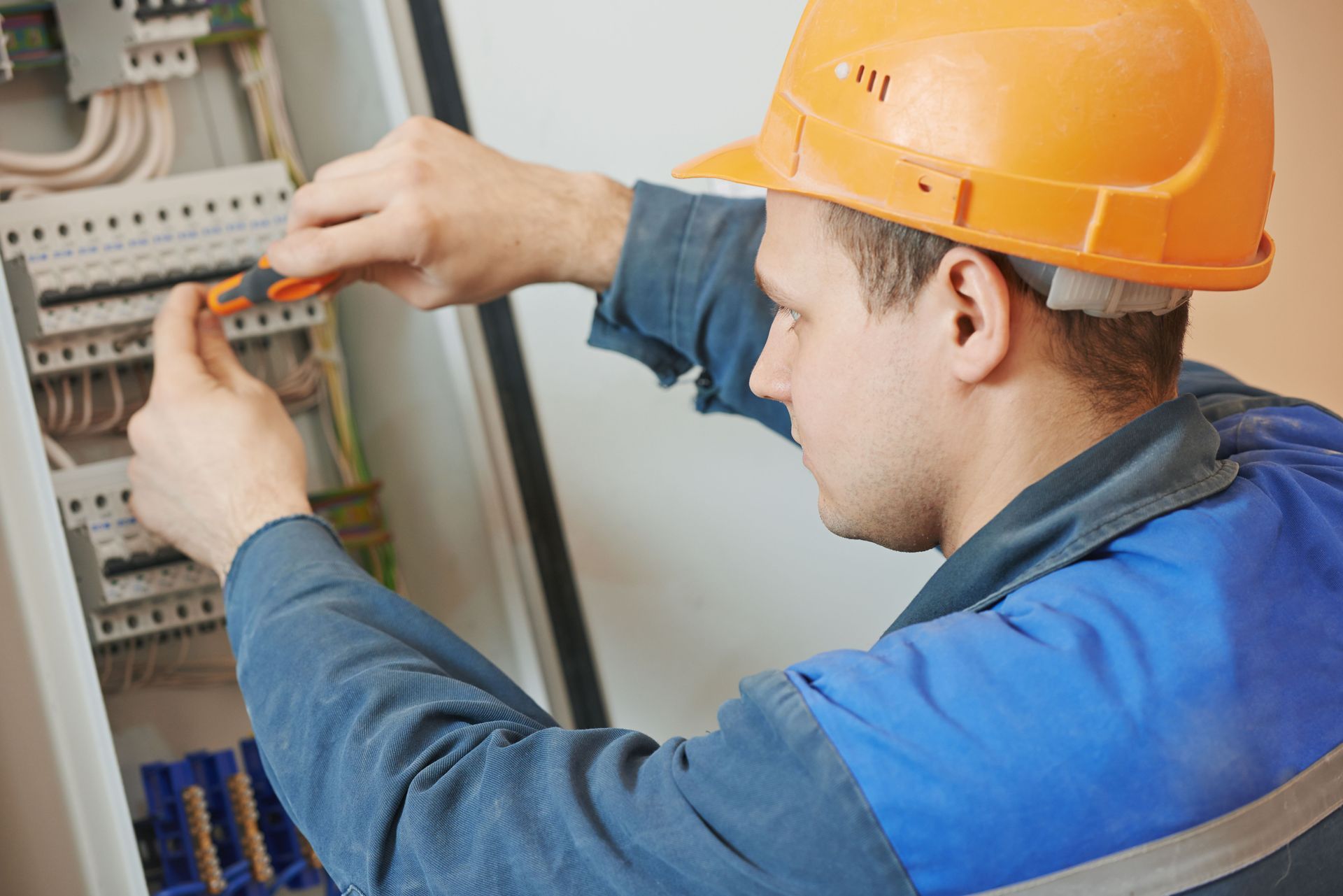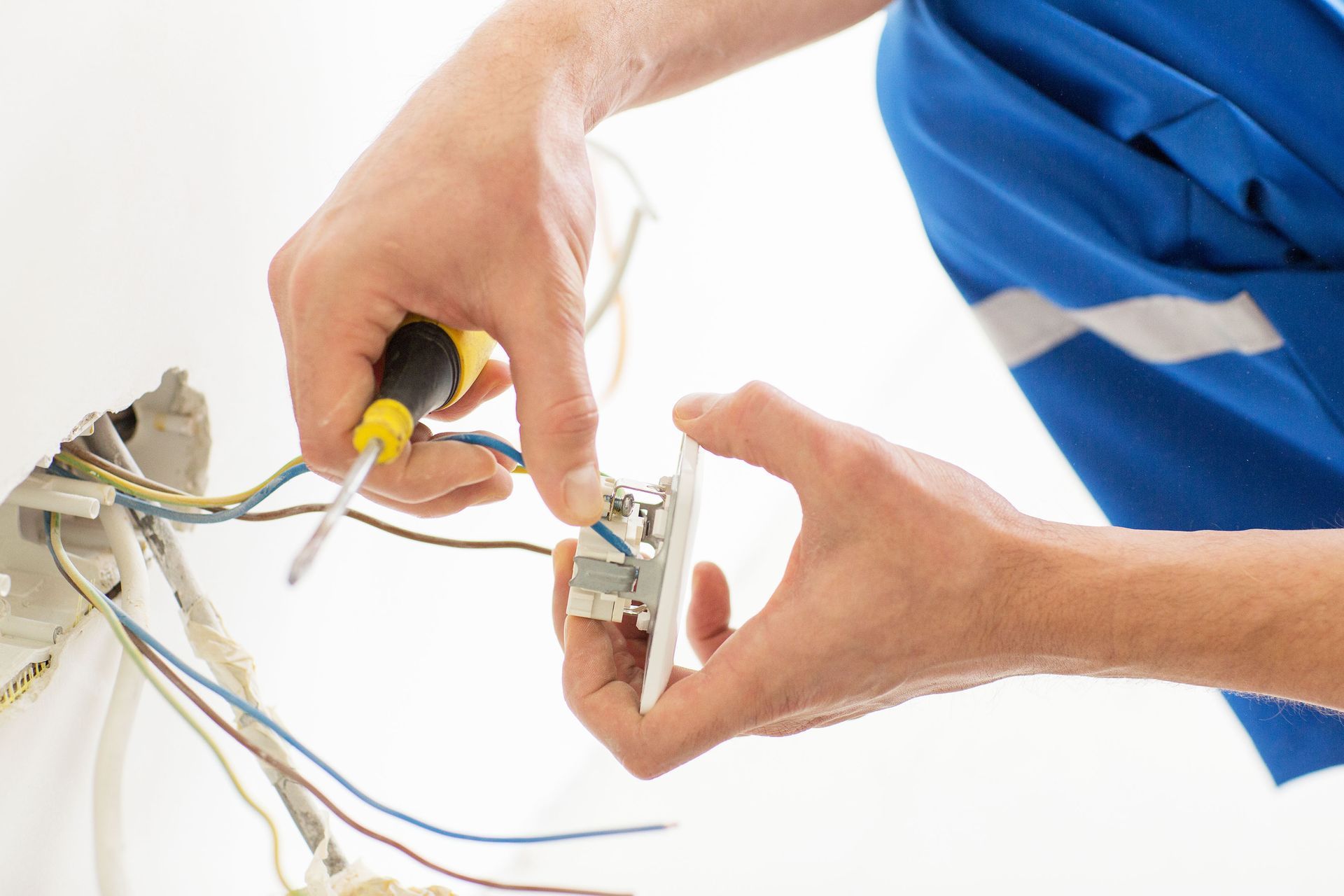How to put out an electrical fire
January 22, 2024
Electrical Fire! How to put it out!
To keep your family safe, here are some tips to help fight an electrical fire. Knowing how to put out a small electrical fire could save you from a disaster. National estimates
for 2021 show there were almost 300 deaths and 900 injuries due to electrical malfunction fires.
If there is an electrical fire, here are some tips to extinguish it.
Turn off the power immediately .
If you can find the device that is the source of the electrical fire and safely able to unplug the cord, do so.
Do not use water to put out the fire.
Water conducts electricity. Adding water to an electrical fire can cause you to get shocked or spread the fire by conducting electricity throughout the room.
Add baking soda
If the fire is small, you may be able to smother the flame with baking soda.
Use the right fire extinguisher
Most residential fire extinguishers are classed ABC. These types of extinguishers are multi-purpose. Class C fires are the electrical fires. You need to make sure if you are using a fire extinguisher, it is labeled with C or ABC. You do not want to be using the wrong type of extinguisher for an electrical fire.
Everyone should have a fire extinguisher that is easily accesible and kept up to date to ensure proper function in your home.
Here you can find more information on fire extinguishers and purchase one for your home.
If you can’t put out the electrical fire with those steps above:
1. Leave the room. Do not stay and try to fight the fire.
2. If the fire is in a room with a door, close it to contain the fire.
3. Call 911 as soon as you are safe to do so.
4. Let the firefighters put out the flames and get your home safe.
Knowing how to put out an electrical fire is important, but we also need to take steps to prevent them from happening in the first place. Read our last blog
about winter electrical safety.


Thanksgiving today is a warm, cozy holiday filled with good food, family, and football. But imagine trying to pull off your Turkey Day traditions without electricity—no oven, no lights, no parade on TV, no fridge full of leftovers! Electricity plays a huge part in how we celebrate Thanksgiving now, and it’s easy to forget that it wasn’t always this way. Let’s take a little journey through history to see how far we’ve come—and how power has changed the way we celebrate the season. 🕯️ Before the Flip of a Switch: Thanksgiving in the 1800s When Abraham Lincoln declared Thanksgiving a national holiday in 1863, most homes relied on oil lamps, wood stoves, and hand-powered kitchen tools. Cooking a full Thanksgiving meal meant: Chopping wood for fuel Baking pies in cast iron ovens Storing perishables in iceboxes, not refrigerators Lighting the dinner table with candles or gas lanterns There were no electric carving knives, no slow cookers, and certainly no "smart ovens." ⚡ The Spark of Modern Comfort: Electricity Enters the Scene Electric power began lighting up American homes in the late 1800s, but it wasn’t until the 1920s–30s that electricity started becoming more common in middle-class homes—just in time to revolutionize the Thanksgiving experience. Electric ovens made cooking faster and more precise Refrigerators extended food storage Electric lighting meant more family and guests could gather late into the evening Radios and, later, televisions brought entertainment to the holiday table Fun Fact: The first Macy’s Thanksgiving Day Parade with a television broadcast aired in 1948—and it’s been a Thanksgiving staple ever since! 🦃 Thanksgiving in the Age of Smart Homes Fast forward to today, and we’re cooking turkeys with Wi-Fi ovens, setting timers with smart speakers, and managing the entire meal with a phone app. Modern Thanksgiving might include: Programmable smart thermostats to keep guests comfortable LED holiday lights that save energy and reduce fire risk Backup generators ensuring nothing interrupts the big meal EV chargers for guests arriving in electric vehicles Watching the game in 4K while the robot vacuum cleans up crumbs 💡 We’re Thankful for Progress—and for You We’re grateful for the modern power that keeps our homes safe, warm, and full of life—especially around the holidays. And we’re even more thankful for the customers and community who trust us to keep that power flowing year-round. Whether you're upgrading your kitchen, installing smart devices, or making sure your panel is ready for holiday guests, we’re here to help. Contact us for a pre-holiday electrical inspection or service—so your Thanksgiving can be powered by peace of mind. Wishing you a bright, warm, and happy Thanksgiving from all of us at KrisLee Electric! 🦃




Share On: